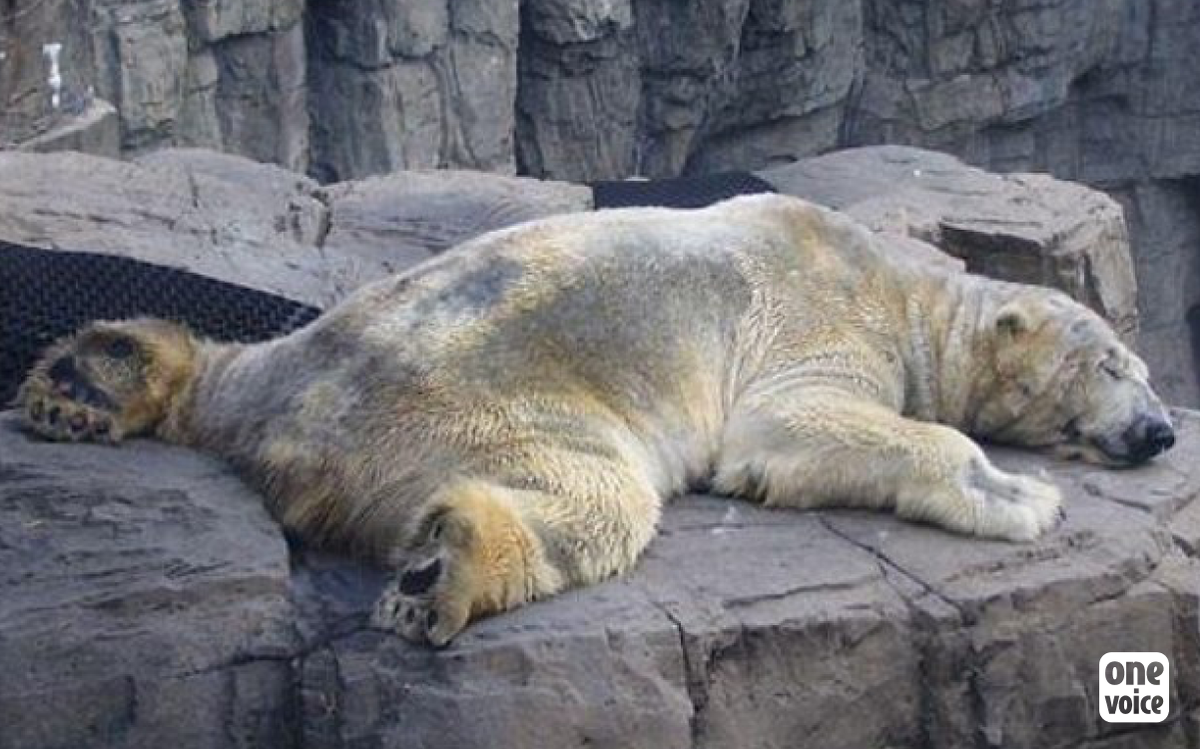

Arturo, polar bear
Arturo has just died in Mendoza zoo, having spent 31 years of his life suffering in a cage. One Voice is demanding a ban against keeping polar bears in zoos in France and around the world.
Lying on the floor with his mouth open, eyes closed, Arturo has just been put down. His lifeless body can be seen through the cage bars. These are the final images of the “world’s saddest bear”.
Born in the United States in 1985, Arturo was transferred in 1993 to the grim Mendoza Zoo, near Buenos Aires, which is temporarily closed at present following the deaths of too many animals. Arturo endured the Argentinian sun and heatwaves but at least he was not alone. For 23 years, he just had a small puddle of lukewarm water a couple of centimetres deep to refresh himself in, and a small red ball to play with around the cell perimeter. But in 2012, his friend Pelusa died of cancer. Arturo’s fragile world came crashing down, and he plunged into a depression which would last until his final days.
As he battled the heat by spreading himself out as long as possible on the floor, and his state of health deteriorated in front of the worried international public, 1.5m people signed a petition demanding his transfer to Canada. Assiniboine Park in Winnipeg was prepared to offer him a place of refuge, where he could see snow for the first time in the company of other bears.
But the offer fell on deaf ears. Gustavo Pronotto, the director of the Mendoza Zoo affirmed that the old bear would not cope with the journey and that he wasn’t used to the cold. On the 3rd of July 2016, at the age of 31, Arturo died just before his euthanasia, despair in his heart.
We know that all polar bears suffer in captivity, with all of them demonstrating behavioural problems to various degrees, like Rasputin in Marineland, Antibes. And all of them without exception have to cope with climates that are far from being ‘polar’. Arturo is probably the most tragic symbol of their distress.
But why? What good does this suffering do? Has Arturo’s despair been in vain? Did Argentinian visitors act to save the Antarctic after having seen him in his cage? Was Arturo a martyr who prompted the rescue of other polar bears? No, of course not. The only way to save the polar bears is to respect the minimal commitments of the COP21, to stop building useless airports on wetlands, to urgently stop the global warming which is destroying the bear’s habitat as well as ours. But it is important to remember that if the polar bear or the panda have been chosen as ambassadors for menaced species, rather than the southwestern water vole, it is because of their spectacular image and the positive impact on a zoo’s turnover that a bear’s birth can have.
Captivity is a stretched out torture for polar bears in France, Europe, Chile, South Africa, and all around the world. Russia captures dozens every year to sell to Chinese zoos. Little by little, the leisure industry is becoming their principal threat. This is why France must set the example and stop exhibiting these wild and magnificent creatures in attraction parks. The tragic death of Arturo should not be in vain.